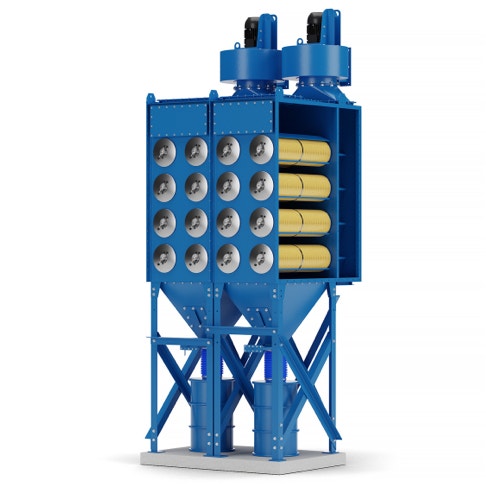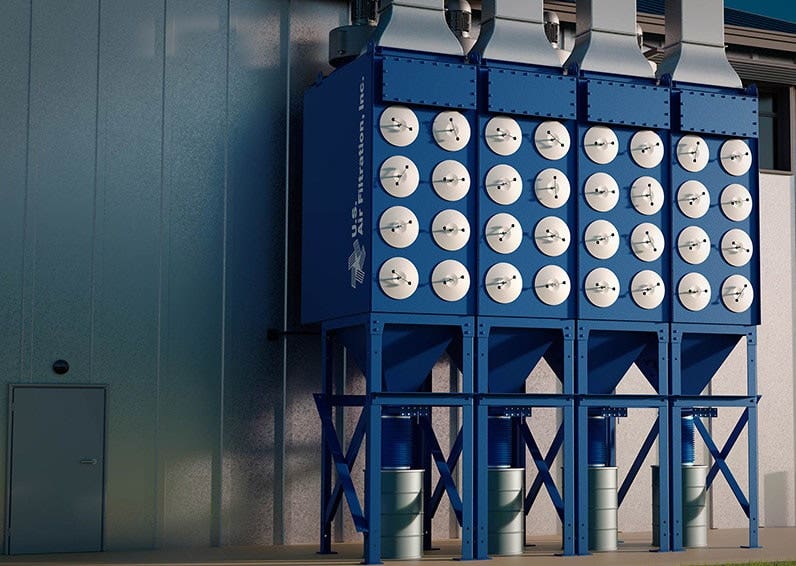Choosing a collector that is too small can cost you in long term maintenance costs.
Some of the biggest problems we see people run into with an inappropriately sized are:
Reduced filter life
Consistently clogged filters
Higher maintenance and energy costs
Decreased efficiency
To avoid the dangers of an undersized dust collector we ask you to consider both CFM and Air to Cloth Ratio.
Dust collector volume is measured in cubic feet per minute or CFM. To put it simply, CFM is a measurement of how much airflow your dust collector can move per minute. To determine your CFM, there are a few variables you should consider:
The other important factor to consider when sizing your unit is Air-to-Cloth ratio. This is the amount of filter media relative to the amount of air passing through the dust collector. Generally it's best to operate with a lower an air to cloth ratio because a lower air to cloth more efficiently removes dust from your environment. With a lower air to cloth ratio, you have plenty of filter media available to capture the dust coming through from the air stream, and you aren't trying to push as much dust through the filter media. When your air to cloth ratio is too high, the dust you are trying to collect is embedded into the filters too fast for your system to efficiently pulse. You end up with rapid build-up of dust, which ends up clogging your filters and making your dust collector work even harder than it should be.
To access an air-to-cloth ratio calculator and receive a list of recommended air-to-cloth ratios for many common applications, download our dust collector purchasing guide or to speak to one of our equipment specialists please contact us at 888-221-0312.
Some of the biggest problems we see people run into with an inappropriately sized are:
To avoid the dangers of an undersized dust collector we ask you to consider both CFM and Air to Cloth Ratio.
Dust Collector Volume - Cubic Feet Per Minute
Dust collector volume is measured in cubic feet per minute or CFM. To put it simply, CFM is a measurement of how much airflow your dust collector can move per minute. To determine your CFM, there are a few variables you should consider:
- The size of the area that needs ventilation.
- Method of ventilation
- Volume of dust being produced
Air-to-Cloth Ratio
The other important factor to consider when sizing your unit is Air-to-Cloth ratio. This is the amount of filter media relative to the amount of air passing through the dust collector. Generally it's best to operate with a lower an air to cloth ratio because a lower air to cloth more efficiently removes dust from your environment. With a lower air to cloth ratio, you have plenty of filter media available to capture the dust coming through from the air stream, and you aren't trying to push as much dust through the filter media. When your air to cloth ratio is too high, the dust you are trying to collect is embedded into the filters too fast for your system to efficiently pulse. You end up with rapid build-up of dust, which ends up clogging your filters and making your dust collector work even harder than it should be.
To access an air-to-cloth ratio calculator and receive a list of recommended air-to-cloth ratios for many common applications, download our dust collector purchasing guide or to speak to one of our equipment specialists please contact us at 888-221-0312.







